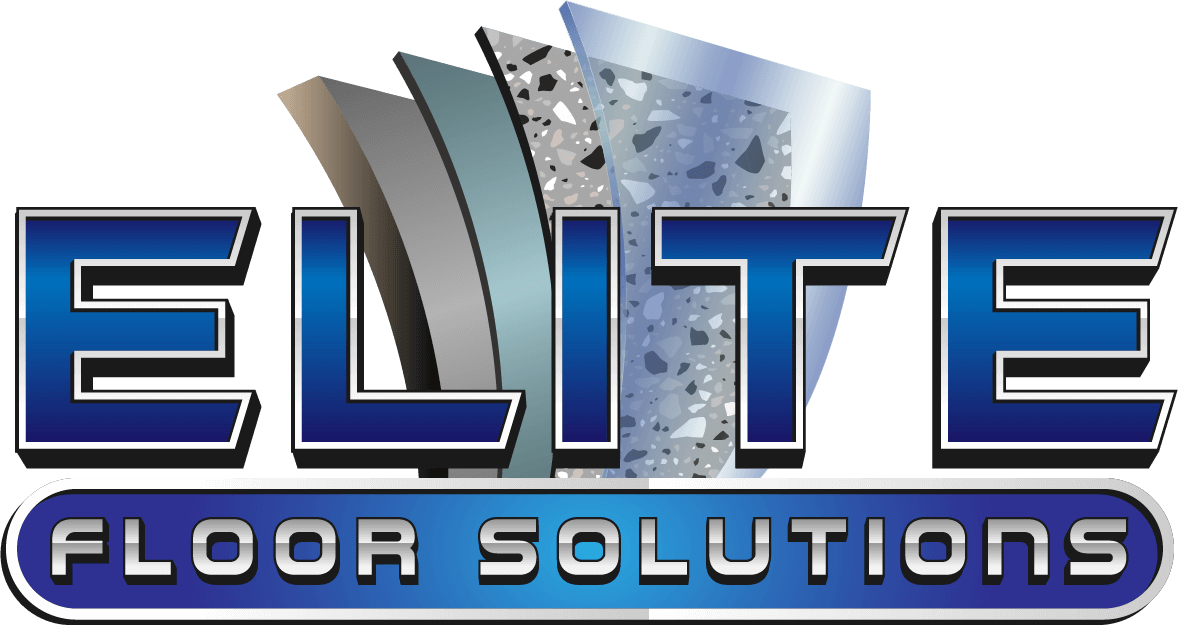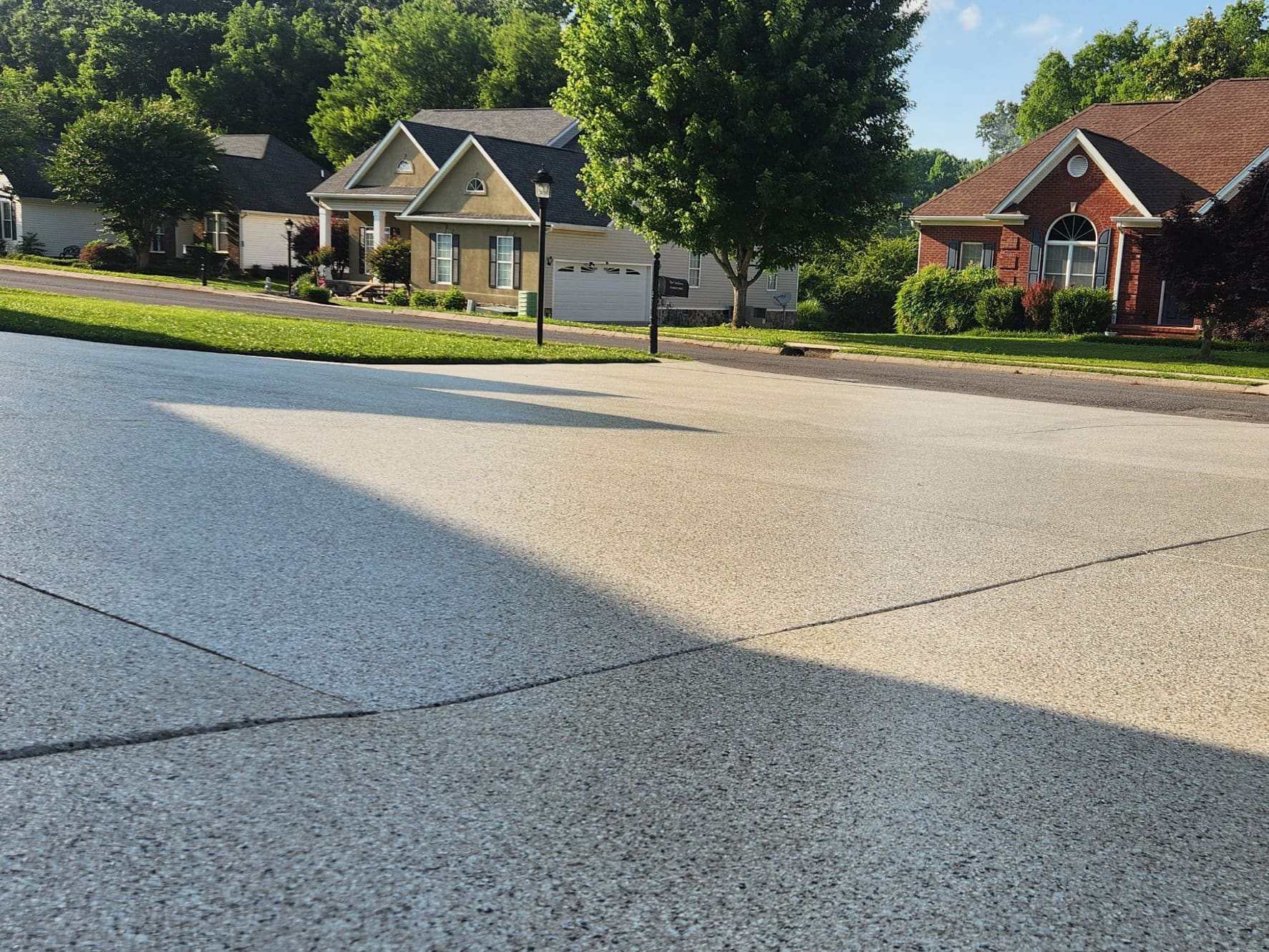Whoever thought the world of concrete coatings could get so complicated or detailed? Epoxy, polyaspartic, polyurea – these sound like words you might learn in high school Chemistry class, not words to describe your garage floor! But here we are! It’s 2024, and the world of concrete coatings has expanded to include multiple choices for the type of concrete coating you want!
Polyaspartic concrete coating is a type of floor coating that is applied over existing concrete. Some flooring professionals consider polyaspartic coatings to be a subset of polyurea coatings. They are stronger and more flexible than traditional epoxy floorings, making them an excellent choice for both residential and commercial flooring.
Knowing that you will be living with the flooring you choose for years to come makes it a big decision, particularly when you consider that no flooring comes cheap. It is both a design choice and a budget decision. This article will take a closer look at polyaspartic coatings vs. traditional epoxy coatings to help you make the decision that is right for you.
What Are Polyaspartic Concrete Coatings?
Polyaspartic coatings resemble polyurethane giving a beautiful shine to your completed floor. Polyspartic is an aliphatic polyurea. Aliphatic has to do with the natural chemical makeup of the compound. It refers to organic compounds in which carbon atoms form open chains. But, does that help you decide if a polyaspartic coating is right for your patio? Probably not. So, with the technical terms out of the way, how else might we describe a polyaspartic concrete coating?
A Four-Layered Coating
Polyaspartic coatings are applied using a 4-layer process. The first layer is the preexisting concrete floor. The professionals at Elite Floor Solutions will prepare the concrete surface so the following layers adhere properly ensuring a beautiful finish that will last for many years. The next coat is a basecoat or primer. The following coat is flake color. This is optional. The flakes add color, depth, and slip resistance that many people find appealing for both appearance and safety. The final coat is the clear polyaspartic topcoat.
What Are Epoxy Concrete Coatings?
Even when referring to polyaspartic or polyurea concrete coatings, people often use the term “epoxy.” However, they are not the same. Epoxy coatings are made of a resin and a hardener. Epoxy coating also requires a multi-layered application process.
Polyaspartic Vs. Epoxy
Now that you know they are made of different compounds, it may be easier to understand why there are some fundamental and important differences between polyaspartic coatings and epoxy coatings. Let’s take a deeper look at what differentiates them.
- Polyaspartic coatings adhere and bond to the concrete. This is extremely important. Epoxy coatings basically sit on top of the concrete, similar to paint as opposed to a true coating that bonds to the concrete. Because of this, epoxy may peel or show signs of wear and tear. Because polyaspartic coatings are truly bonded to the concrete, they cannot peel. Flakes will not break free, thus virtually eliminating signs of wear and tear.
- Polyaspartic coatings are UV-resistant. Polyaspartic coatings will not fade or yellow due to sun exposure. Epoxy coatings will yellow from sun exposure. This isn’t a problem if the flooring is inside; but if it is a pool deck or driveway, then the color will not withstand the sun’s UV rays. Polyaspartic coatings maintain the same brilliance and beauty throughout their lifetime.
- Polyaspartic coatings are fast-curing. Do you have a big pool party planned for the weekend? Polyaspartic coatings are the way to go to refurbish your tired pool deck. They cure 5x faster than epoxy which can take days to harden. You can have your pool deck redone with polyaspartic coating and walk on it within a day. Now that’s convenient!
- Polyaspartic coatings are more flexible. The flexibility of polyaspartic coatings makes them more durable than epoxy coatings. With flexibility, coatings will not crack, chip, or peel. Flexibility helps with impact resistance. Because the coating has flexibility it will “give” (although you can’t see it) which helps prevent dings and chips from dropped objects.
Should I Ever Choose Epoxy Over Polyaspartic Coatings?
Ideally, you should choose polyaspartic over traditional epoxy. However, if budget is a main concern, epoxy may be a good alternative for you as polyaspartic coatings are more expensive than epoxy. But remember that you get what you pay for, so you will not have the same longevity with epoxy. It will not retain its appearance over the years as it will yellow and show signs of wear and tear like chipping or peeling. If you can pay a bit more now to get polyaspartic, you will get many years out of your new flooring.
Summary
With their true bond to concrete, UV resistance, fast curing time, and flexibility, polyaspartic coatings are a clear winner over traditional epoxy coatings. If you live in the Chattanooga, TN area, then we would love to transform your floors with our concrete coatings! Whether it is a pool deck, laundry room, or large industrial space, Elite Floor Solutions has the experience and premium products to turn your old concrete into the premier flooring you have always wanted.

